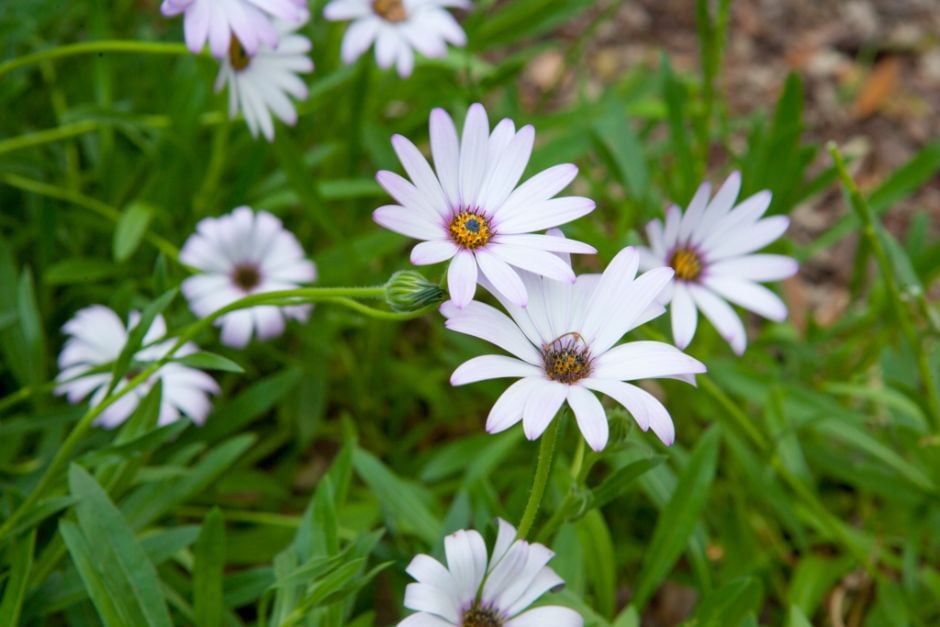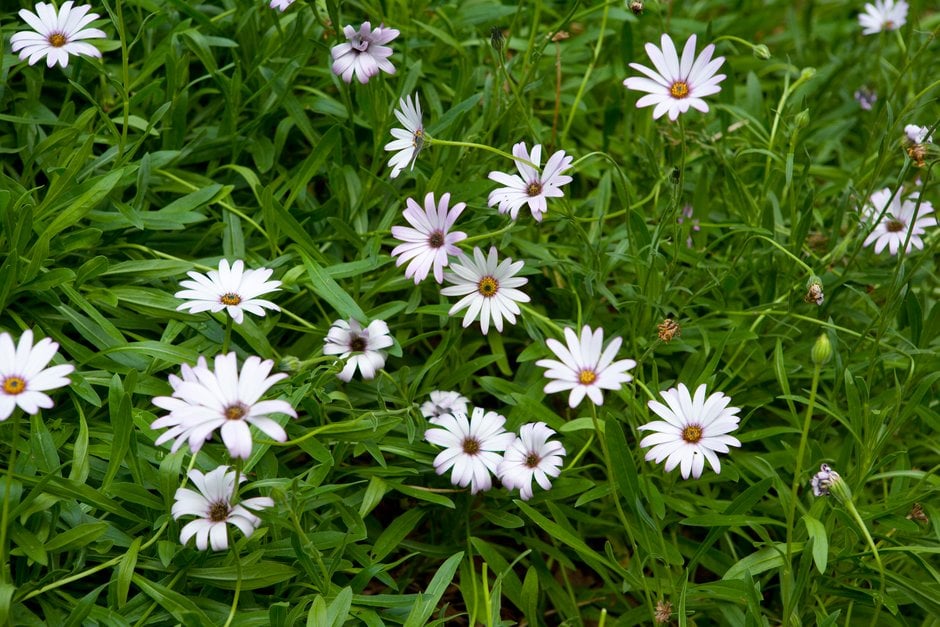Dimorphotheca ecklonis
deep purple African daisy
An erect or spreading evergreen shrub or subshrub, up to 1m high, with aromatic grey-green leaves, up to 10cm long, which may be linear-oblong, elliptic or lance-shaped, and entire, partly or wholly toothed, and flowerheads, 5-8cm across, with dark blue disc florets and ray florets which are white above and indigo below, throughout the summer
Size
Ultimate height
0.5–1 metresTime to ultimate height
2–5 yearsUltimate spread
0.5–1 metresGrowing conditions
Moisture
Well–drainedpH
Acid, Alkaline, NeutralColour & scent
| Stem | Flower | Foliage | Fruit | |
| Spring | Green Grey Silver | |||
|---|---|---|---|---|
| Summer | Blue White | Green Grey Silver | ||
| Autumn | Green Grey Silver | |||
| Winter | Green Grey Silver |
Position
- Full sun
Aspect
West–facing or South–facing
Exposure
ShelteredDrought resistance
Yes Hardiness
H3Botanical details
- Family
- Asteraceae
- Native to GB / Ireland
- No
- Foliage
- Evergreen
- Habit
- Spreading branched
- Potentially harmful
- Pets (rabbits, rodents): Harmful if eaten. For further information and contact numbers regarding pets, see the HTA guide to potentially harmful plants
- Genus
Dimorhotheca can be annuals or woody-based, evergreen perennials with simple, alternate leaves and large daisy-like flower-heads in summer and autumn
- Name status
Correct
- Plant range
- Eastern Cape
How to grow
Cultivation
Grow in light, moderately fertile, very well-drained soil in a warm site in full sun with shelter from cold winds; in frost-prone climates, propagate reserve plants every year, and overwinter young plants in frost-free conditions
Propagation
Propagate by seed, sown at 18°C in spring; by softwood cuttings in late spring; or by semi-ripe cuttings in late summer
Suggested planting locations and garden types
- Coastal
- Cottage and informal garden
- City and courtyard gardens
- Gravel garden
- Patio and container plants
- Mediterranean climate plants
- Flower borders and beds
- Banks and slopes
- Ground cover
- Wall side borders
Pruning
No pruning required, but deadheading will prolong flowering
Pests
Generally pest-free but may be susceptible to aphids
Diseases
Generally disease-free but may be susceptible to downy mildews and verticillium wilt
Love gardening
Sign up to receive regular gardening tips, inspiration, offers and more
View our Privacy Policy
Get involved
The Royal Horticultural Society is the UK’s leading gardening charity. We aim to enrich everyone’s life through plants, and make the UK a greener and more beautiful place.

